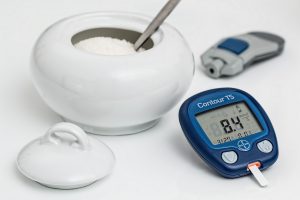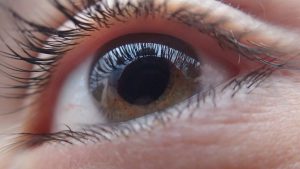Take a look around you – what do you see? Maybe you see friends and neighbors chatting outside, a flourishing garden, a beautiful sunset, or a clear blue sky. Our sense of sight is one of the things that keeps us connected to the beauty of the world, and one of the main things that keeps us independent. However, as we age, our eyesight naturally deteriorates. There are some protective measures you can take to support healthy eyes and protect your precious eyesight.
Common Eyesight Changes
Many people report that changes in their eyesight sneak up on them. Because many conditions develop painlessly and have few early symptoms, they often go unnoticed until the condition is quite advanced. But if you are aware of common age-related eye issues and their symptoms, you can identify any red flags and discuss possible treatment with a doctor. Some common age-related eye conditions include:
- Floaters. While this might not sound like a scientific term, the term “floater” is used to describe spots, thread-like strands, or squiggly lines that drift around in your field of vision. What you are actually seeing is the shadow of vitreous, the gel substance that makes eyes round. These are usually a harmless and natural part of aging. However, if you suddenly notice a large amount of floaters, loss of peripheral vision, and/or flashes of light, it could mean something more serious and you should seek medical attention right away.
- Dry eyes. As we age our eyes stop producing enough high-quality tears to lubricate themselves. This can result in dry eyes, which can cause an itching, burning sensation and red eyes. Eyes that are too dry have an increased risk of infection and tears to the cornea. There are many medical and environmental factors that might contribute to the onset of severe dry eyes, such as menopause, certain medications, and allergies. Dry eyes can usually be treated with over-the-counter eye drops or hot compresses, but see a specialist if this condition becomes painful.
- Presbyopia. Presbyopia is a common eye condition that is caused by the muscles around the lens of the eye hardening as we age. Presbyopia makes it difficult to focus on close-up objects, which can result in headaches, eye strain, and difficulty reading small print. A doctor can diagnose and correct this condition with reading glasses.
- Cataracts. Half of all Americans have cataracts by the time they are 80 years old. This common condition is characterized as “cloudy vision” – in fact, it can sometimes be visible to the naked eye, with the lens of the eye appearing opaque. Cataracts can cause blurred vision, double vision, decreased visible contrast, decreased low-light vision, and increased light sensitivity and glares. All of these symptoms make driving particularly dangerous, especially at night. Cataracts can be treated with surgery.
High-Risk Eye Conditions
In addition to typical age-related eye changes, there are other health issues that might exacerbate eyesight issues, which can even result in permanent vision loss. People with diabetes are at a greater risk for developing the following optical conditions:
- Diabetic retinopathy. This condition is the result of damage to blood vessels in the eye, which causes retinal tissue to swell and creates cloudy vision. At its most severe, diabetic retinopathy can cause blindness.
- Glaucoma is a group of eye diseases that cause damage to the optic nerve, impacting peripheral vision. Glaucoma is often painless and can have no obvious symptoms until peripheral vision is impacted. If left untreated, glaucoma can cause blindness.
- Retinal detachment. Retinal detachment is a tearing or separation of the retina. This can be caused by trauma to the eye or head, and is found in patients with advanced diabetes.
Protect your eyes
Though the risks are real, there are a few routine adjustments that seniors can make to protect and preserve their eyesight.
- Routine medical appointments. Doctors and optometrists alike stress the importance of regular visits to your primary care practitioner and all medical specialists – including optometrists. With routine visits, your medical team will be able to keep tabs on any developments in your health and intervene at the first sign of an issue. This is particularly pertinent for people with additional health risks, such as diabetes.
-

Make sure to protect your eyes when you are outside in the sun. Follow medical advice. The World Health Organization reports that 75% of adults need glasses, but many people say that they “should wear glasses, but don’t.” If a medical expert prescribes something – a medication, lifestyle adjustment, or glasses – it’s important to make sure you are following their orders!
- Make household adjustments. In addition to following medical protocols, there are some easy adjustments you can make around the house. Instead of reading by a dim light, try switching to fluorescent light bulbs or listening to an audio-book to reduce eye strain. You can also increase the font size on your computer and phone as well as increase the brightness on your screens.
- Lifestyle changes. We know that many eye issues are age-related. We can’t stop aging, but we can make it healthy and painless by exercising regularly, eating a healthy and balanced diet, protecting our eyes and bodies from harmful UV rays, and quitting smoking.
There are some real – and scary – age-related eye health issues. But you don’t have to live in fear of losing your sight! By making the necessary adjustments, checking in with doctors regularly, and maintaining a healthy lifestyle, you can preserve your vision for many years to come.


